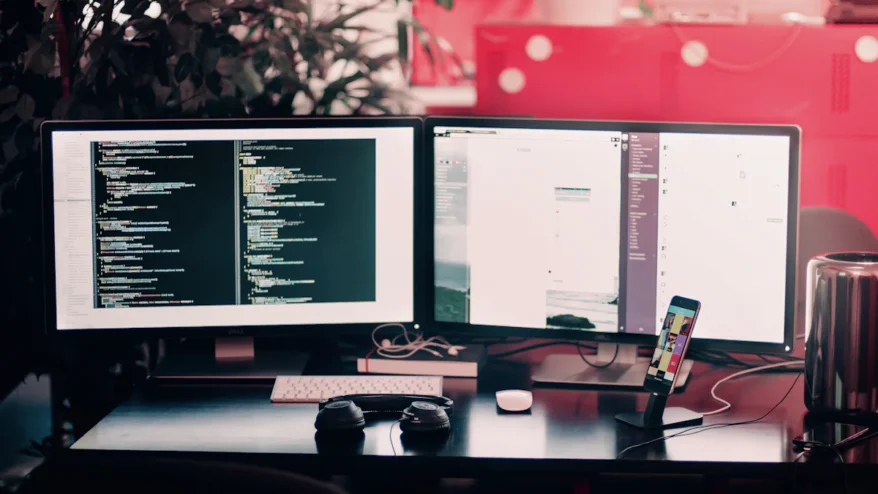Hacktoberfest for Newbies: How to Contribute to Open Source
Estimated reading time: 8 minutes
Welcome to Hacktoberfest, an exciting event that invites you to dive into the world of open source. Every October, thousands of participants join this global celebration, contributing to open source projects and enhancing their skills. Open source is vital because it fosters innovation and collaboration. By participating in Hacktoberfest, you not only learn but also help sustain the tools many developers rely on. If you’re new to coding, don’t worry! Hacktoberfest is perfect for beginners. You’ll find a supportive community eager to guide you.
So, why not take the plunge and make your mark in the open source world?
Understanding Hacktoberfest
What is Hacktoberfest?
Hacktoberfest is a month-long celebration of open source software that takes place every October. Organized by DigitalOcean, this event encourages people from all over the world to contribute to open source projects. It’s a fantastic opportunity for you to dive into the world of collaborative coding and make a real impact.
History and purpose
Hacktoberfest began in 2013, founded by DigitalOcean and GitHub. The purpose was simple: to ignite the spirit of open source collaboration globally. Over the years, it has grown into a massive event that attracts developers from every corner of the globe. The aim is to encourage more people to participate in open source and help enhance the software that powers our world today.
How it Works
Participating in Hacktoberfest is straightforward. You register on the official website and then start contributing to open source projects. The goal is to submit four pull requests during October. These contributions can be anything from fixing bugs to improving documentation. Once you complete the challenge, you become eligible for rewards like digital badges or even a Hacktoberfest T-shirt.
Why participate in Hacktoberfest?
Joining Hacktoberfest offers numerous benefits. It’s not just about coding; it’s about becoming part of a global community that values collaboration and innovation.
Skill Development
By participating, you get to sharpen your coding skills. Working on real-world projects allows you to learn new technologies and improve your problem-solving abilities. It’s a hands-on experience that can significantly boost your technical expertise.
Community and networking opportunities
Hacktoberfest connects you with a vibrant community of developers. You can engage with project maintainers and other contributors, building relationships that can last beyond the event. Networking with like-minded individuals opens doors to new opportunities and collaborations.
Portfolio Building
Contributing to open source projects enhances your portfolio. It showcases your ability to work on diverse projects and solve real-world problems. Potential employers value this experience, as it demonstrates your commitment to continuous learning and improvement.
Rewards and Recognition
Completing the Hacktoberfest challenge earns you recognition within the open source community. You also receive tangible rewards, such as digital badges and merchandise. These incentives motivate you to keep contributing and growing as a developer.
Getting Started with Open Source

Embarking on your open source journey can feel overwhelming, but with the right tools and guidance, you’ll be contributing in no time. Let’s break it down step by step.
Setting Up Your Environment
Before you dive into coding, you need to set up your environment. This involves gathering the necessary tools and creating a GitHub account.
Tools and software needed
To start contributing to open source, you need a few essential tools:
- Git: This version control system helps you manage your code and track changes. Created by Linus Torvalds, Git allows you to collaborate with others efficiently. You can download it from the official Git website.
- Text Editor: Choose a text editor that suits your style. Popular options include Visual Studio Code, Atom, and Sublime Text. These editors offer features that make coding easier and more enjoyable.
- Terminal or Command Line Interface: Familiarize yourself with the terminal or command line interface. It’s a powerful tool for executing commands and managing your projects.
Creating a GitHub account
GitHub is a cloud-based platform where developers share and collaborate on code. To get started, create a GitHub account:
- Visit GitHub’s website.
- Click on “Sign up” and fill in your details.
- Verify your email address and complete your profile.
With your GitHub account ready, you can now explore countless open source projects and start contributing.
Finding the Right Project
Choosing the right project is crucial for a fulfilling Hacktoberfest experience. Here’s how to find one that matches your interests and skills.
Register for Hacktoberfest
First, register for Hacktoberfest on the official website. This step is essential to track your contributions and qualify for rewards. Once registered, you’re all set to begin your open source adventure.
Identifying interests and skills
Think about what excites you. Are you passionate about web development, data science, or mobile apps? Identifying your interests helps you find projects that you’ll enjoy working on. Also, consider your current skills. If you’re a beginner, look for projects that match your skill level.
Searching for beginner-friendly projects
GitHub is a treasure trove of open source projects. To find beginner-friendly ones, use labels like good-first-issue, beginner-friendly, or help-wanted. These tags indicate tasks suitable for newcomers. You can also explore repositories related to your interests and see if they have issues you can tackle.
By setting up your environment and finding the right project, you’re well on your way to making meaningful contributions to open source. Remember, every small contribution counts, and Hacktoberfest is the perfect opportunity to start your journey.
Making Your First Contribution

Congratulations on setting up your environment and finding the right project! Now, it’s time to make your first contribution to open source. This section will guide you through the process, ensuring you feel confident and ready to dive in.
Understanding Git and GitHub
Before you start contributing, it’s essential to understand the basics of Git and GitHub. These tools are the backbone of open source collaboration.
Basic Git commands
Git is a powerful version control system that helps you manage your code. Here are some basic commands you’ll need:
git init: Initializes a new Git repository.git clone [URL]: Clones a repository to your local machine.git add [file]: Stages changes for commit.git commit -m "message": Commits changes with a message.git push: Pushes your changes to the remote repository.
These commands form the foundation of your Git workflow. Practice them to become comfortable with managing your code.
Navigating GitHub repositories
GitHub is where you’ll find and contribute to open source projects. Here’s how to navigate a repository:
- Explore the Repository: Check the README file for an overview of the project. It often contains instructions on how to contribute.
- Issues Tab: Look for issues labeled as
good-first-issueorhelp-wanted. These are beginner-friendly tasks. - Fork and Star: Fork the repository to create your own copy. Star it to show your interest.
Understanding these elements will help you engage effectively with the project and its community.
Submitting a Pull Request
Once you’re familiar with Git and GitHub, you’re ready to submit your first pull request. This process involves several steps, but don’t worry—it’s straightforward!
Forking a repository
Forking creates a personal copy of the repository on your GitHub account. This allows you to make changes without affecting the original project.
- Click the Fork button at the top right of the repository page.
- Your forked repository will appear in your GitHub account.
Clone the Repository Locally
Next, clone your forked repository to your local machine:
git clone [your-forked-repo-URL]This command downloads the repository, allowing you to work on it offline.
Create a New Branch
Creating a new branch keeps your changes organized and separate from the main codebase:
git checkout -b [branch-name]Choose a descriptive name for your branch, like fix-bug or add-feature.
Making changes and committing
Now, make the necessary changes to the code. Once you’re satisfied, stage and commit your changes:
git add [file]
git commit -m "Describe your changes"- Push your branch to your forked repository:
git push origin [branch-name] - Go to your repository on GitHub and click Compare & pull request.
- Fill in the details and submit your pull request.
Clear commit messages help maintainers understand your contributions.
Creating a pull request
Finally, push your changes to GitHub and create a pull request:
Your pull request is now ready for review. Engage with maintainers and respond to feedback to improve your contribution.
Making your first contribution can be a rewarding experience. Hacktoberfest provides the motivation and structure to venture into open source, helping you gain confidence and make meaningful contributions. Remember, every contribution counts, no matter how small. Enjoy the journey and the learning experience!
Tips for Successful Contributions
Participating in Hacktoberfest is a fantastic way to dive into open source, but making successful contributions requires some finesse. Here are some tips to help you along the way.
Communicating with Project Maintainers
Effective communication with project maintainers is crucial. It ensures your contributions are noticed and appreciated.
Writing clear commit messages
Clear commit messages make a big difference. They help maintainers understand your changes quickly. Use concise language and describe what you did and why. For example, instead of writing “fixed bug,” try “resolved issue with login authentication.” This clarity helps everyone involved.
Engaging in discussions
Engage actively in discussions. Comment on issues and ask questions if you’re unsure. Maintainers appreciate contributors who show interest and initiative. Remember, they might not always respond immediately. As one contributor noted:
“Sometimes honest attempts at solving an issue are completely ignored. I invested my time and expect something in exchange, even if it is just a ‘hey, you did it wrong’ so I can learn from that experience.”
Patience and persistence are key. Your engagement shows dedication and can lead to valuable learning experiences. Feedback is a gift. It helps you grow and improve your contributions.
Responding to code reviews
When maintainers review your code, pay attention to their feedback. Respond politely and make necessary changes. This interaction not only improves your code but also builds rapport with the community. A simple “thank you for the feedback” goes a long way.
Improving based on suggestions
Use suggestions to enhance your skills. If a maintainer points out an error, take it as an opportunity to learn. Implement their advice and ask questions if needed. This approach not only improves your current contribution but also prepares you for future projects. By following these tips, you’ll make meaningful contributions to open source during Hacktoberfest. Remember, every interaction is a chance to learn and grow. Enjoy the journey and embrace the community spirit!
For more intriguing insights into other STEM-related topics, visit ENTECH Online. Explore our digital magazine dedicated to inspiring teenagers and young adults to pursue their passions in science, technology, engineering, and mathematics.
